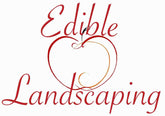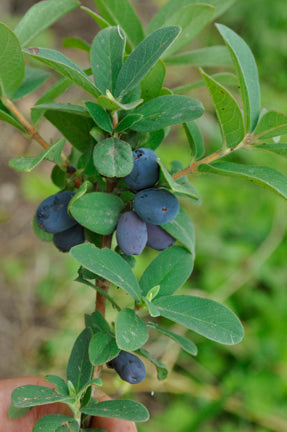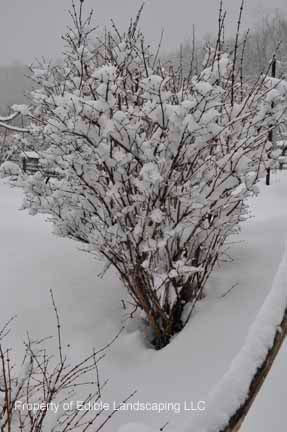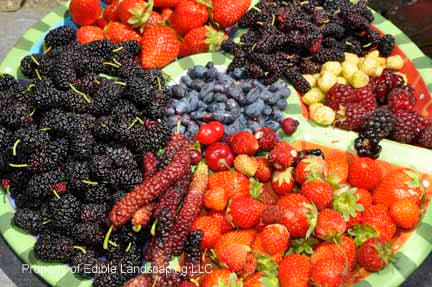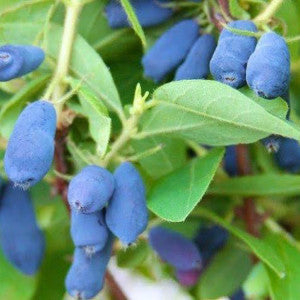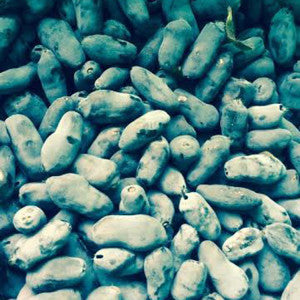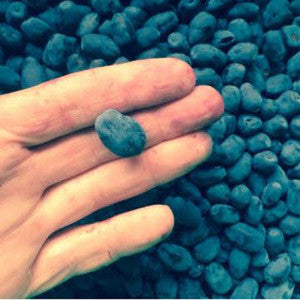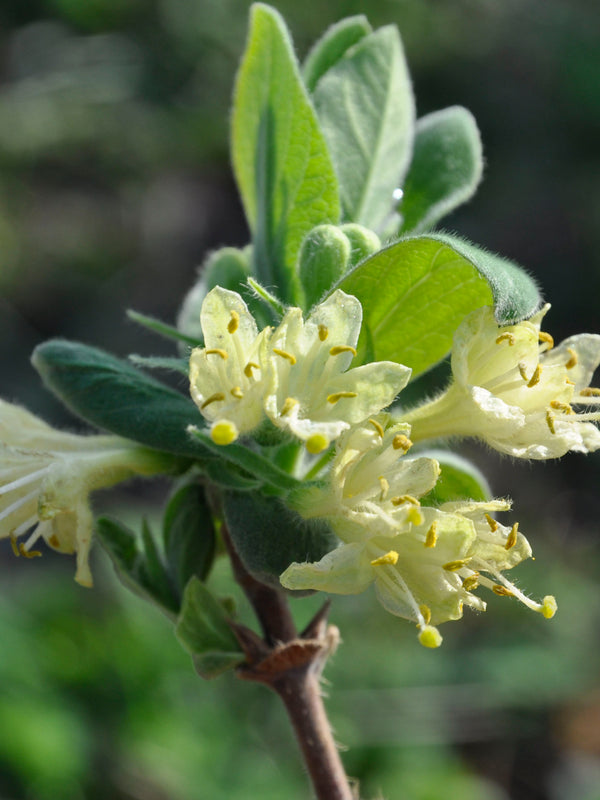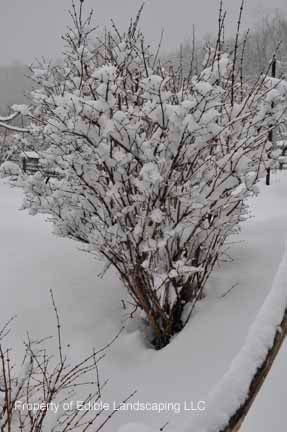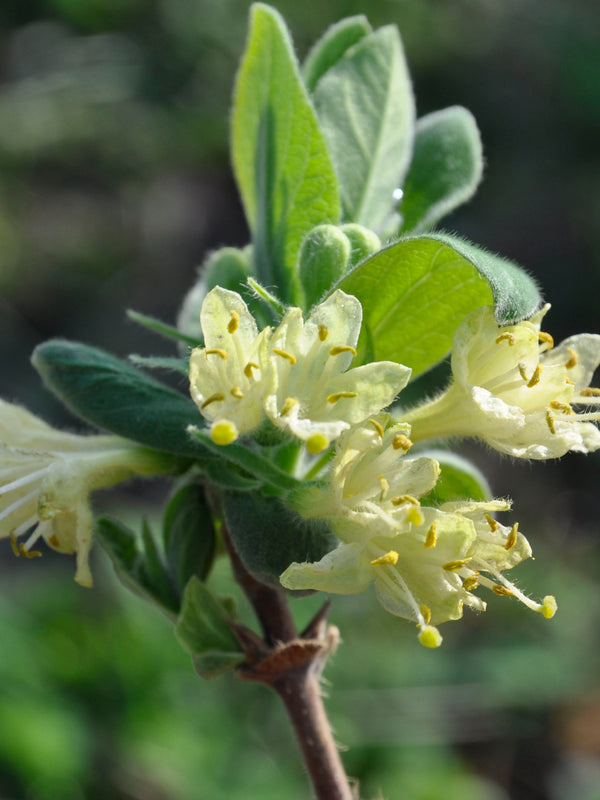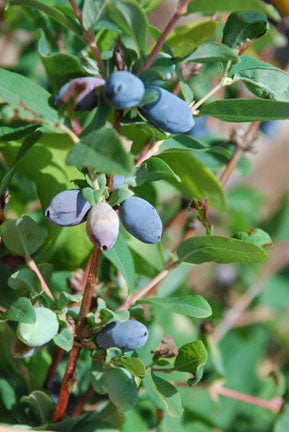Solo Honeysuckle

Lonicera caerulea ssp. emphyllocalyx
The new Solo edible honeysuckle bush is more adapted to moderate climates such as Virginia. We've grown edible honeysuckle bush varieties since 1989 with meager harvests. Maxie and Solo may prove to be more productive. The berries should be sweeter than other popular varieties with an 18 brix reading.(Measurement for sugars in fruit. 18 is minimal number for California grapes to be dried to raisins.) Maxie and Solo are bred by Maxine Thompson. She used a Japanese sub species in her breeding work resulting in a more adaptable sweeter plant and fruit. The Japanese term for these plants is Haskap. The bushes are pretty, compact with an extended blooming period. The flowers bloom later than other popular varieties which is a plus for areas of fluctuating winter temperatures. Maxie needs to be pollinated by Solo. Solo is self fertile, but the fruits are twice the size if pollinated. Space 3' circle Zones 3-8
| Plant Characteristics | |
|---|---|
| Pest Resistance | Excellent |
| Disease Resistance | Excellent |
| Drought Tolerance | Fair |
| Heat Tolerance | Very Good |
| Humidity Tolerance | Very Good |
| Sun Tolerance | Good |
| Wet Soil Tolerance | Poor |
| Shade Tolerance | Fair |
| No Spray | Excellent |
| Salt Tolerance | Poor |
| Fresh for Kids | Very Good |
| Deer Resistance | Fair |
| Thorns | No |
| Plant Type | Shrub |
| Soil Type | Adaptable |
| Edible Type | Fruit |
| Self Fertile | Yes |
| This information is accurate to the best of our knowledge, comments/opinions are always welcome | |
Edible Honeysuckle Care Guide
/images/site/fruit%20bowl%20first%20fruits_DSC0257.jpg)
Edible Honeysuckle are among the first fruits of the season
A unique member of the Honeysuckle family native to Eastern Siberia. This very hardy deciduous species has been a valued fruiting plant for ages and yet is virtually unknown in Europe and America. An attractive small bush, it produces tasty small fruits about the size and flavor of blueberries. Small white, slightly fragrant flowers appear in March. Fruit ripens two weeks before strawberries. Very easy to grow with no pest or disease problems.
Site & Soil
Edible Honeysuckle is a shade-loving plant in all areas except the far north, where it is happy in full sun. It prefers moderately well-drained, yet moist, soil. Mulching with compost, peat moss or decomposed manure helps maintain adequate soil moisture.
Pollination
Honeysuckle is not self-fertile. Plant at least two varieties if fruit is desired. When we ship we sent two different types.
Bearing age
1-2 years after planting.
Hardiness
/images/site/honeysuckle%20in%20snow_DSC0112.jpg)
Honeysuckle bush in snow
One of the hardiest fruiting plants, to minus 40*F minus 40*C (zone3).
